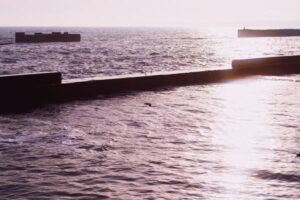 A team of researchers from France proposes for the first time the opportunity to detect the propagation of seismic waves on the seafloor by fiber optic seismic sensors made from submarine telecommunications cables. The researchers confirm that the potential application of such seismic sensors includes the use of existing infrastructure for the detection of earthquakes, as well as swell and underwater noise.
A team of researchers from France proposes for the first time the opportunity to detect the propagation of seismic waves on the seafloor by fiber optic seismic sensors made from submarine telecommunications cables. The researchers confirm that the potential application of such seismic sensors includes the use of existing infrastructure for the detection of earthquakes, as well as swell and underwater noise.
It should be noted that about 1.2 million kilometers of telecommunications cables cut across the ocean floor that is equal to three times the distance from the Earth to the Moon. The cables consist of optical fibers leading to simple communication by phones, SMS, or e-mail. Herewith, the optical fibers could soon find a new application, that of detecting acoustic and seismic waves.
To be more precise, the researchers apply a 41 km-long fiber cable installed at the coast of Toulon in southern France for their tests to obtain data from the fiber optic sensors of the underwater observatory that is at a depth of 2500 m. Moreover, a special technique based on small impurities in the optical fibers is used for sending light back to the transmitter.
The thing is that “by stretching or contracting the optical fiber, the passage of a seismic or acoustic wave alters the distance between these impurities, and thus the backscattered signal, by a tiny amount.” Nonetheless, the researchers have to prove the opportunity to detect these differences in submarine fiber optic cables because of the insulating layers that surround the optical fibers.
Thus, the pulses of light put at the optical fiber and allow analyzing the backscattered signal. The researchers use the 41 km of optical fibers for tests and change them into more than 6000 fiber optic seismic sensors. Moreover, such fiber sensors enabled to detect a magnitude 1.9 earthquake that happened during the test at each of the sensing areas with a sensitivity close to that of a coastal seismic station, even despite the fact that it was located over 100 km from the fiber optic cable.
Nevertheless, the benefits of seismic sensors do not complete: the sensing points of fiber cable are highly sensitive to waves that go through the ocean, for instance, those created by the swell. The influence of waves on the seafloor near the coast, as well as the effect on the abyssal plain, where they produce “seismic background noise” was captured.
Finally, the fiber optic seismic sensors make it real to find out for the first time how the tiny vibrations that permanently interact with the Earth’s interior are created, allowing specialists in geophysics to examine its structure. Also, such fiber sensors may overcome a wide range of scientific and societal challenges like earthquakes, coastal erosion, the interaction between life, the oceans and the solid Earth, etc.
Optromix is a manufacturer of innovative fiber optic products for the global market. The company provides the most technologically advanced fiber optic solutions for the clients. Optromix produces a wide range of fiber optic devices, including cutting-edge customized fiber optic Bragg grating product line and fiber Bragg grating sensor systems. Moreover, Optromix is a top choice among the manufacturers of fiber Bragg grating monitoring systems. If you have any questions, please contact us at info@optromix.com

